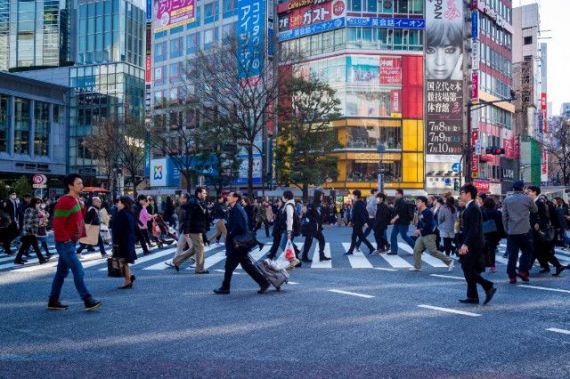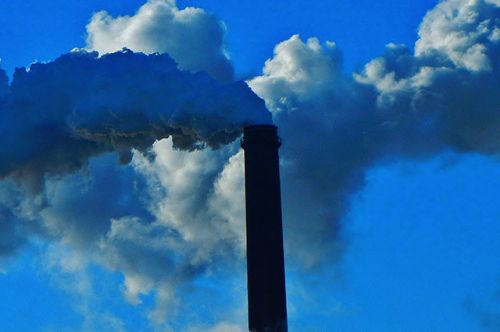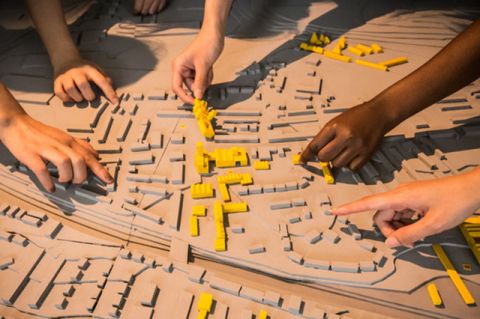Calls for Papers

Guest Editors: Jonathon Taylor (Tampere U) and Philippa Howden-Chapman (U of Otago)
Abstract submissions closed on 30 July 2020
Negative consequences of human activity represent an unprecedented threat to both human health and planetary health. Transformative changes are urgently needed to mitigate the threats to planetary and human health. Recent epidemics (SARS, MERS, COVID19) have revealed the need for a systems-based approach to reducing risk and combatting the spread of diseases.
Cities are complex systems (Siri, 2016, Rydin et al., 2012), with interactions between various factors e.g.: urban density, 'green' infrastructure and open space, housing, transport, waste management, water and sanitation, air quality, health systems, and city governance. With an increasing majority of the global population now inhabiting urban areas (United Nations, 2018), it is essential that cities reduce their environmental footprints and increase their resilience to environmental change whilst protecting and promoting planetary health.
This special issue explores how these multiple challenges can be addressed through development and implementation of evidence-informed solutions in a variety of different contexts (mature cities, rapidly expanding urban areas, shrinking cities, and informal settlements; Global North and Global South); political systems (high centralised, decentralised, autocratic, democratic) and scales (city, neighbourhood, street, building).
Papers are sought on a variety of topics that model, track or evaluate the effectiveness and outcomes of different policies or practices, as well as the interaction between various systems. We are interested in research that accelerates the implementation of large-scale 'transformational' changes that improve health and sustainability in low-, middle- and high-income settings, and across different socioeconomic and demographic groups.
More
Guest Editors: Faye Wade (University of Edinburgh) and Henk Visscher (TU Delft)
Abstract submissions closed on 13 July 2020
A major contribution to achieving emissions reductions must come from retrofitting the existing domestic (e.g. residential and mixed-use partly residential) building stock to radically reduce the use of non-renewable energy for heat and power (CCC, 2019). Retrofitting is "the introduction of new materials, products and equipment into an existing building with the aim of reducing the use of energy" (Baeli, 2013: 17). Successful retrofitting will only be achieved through aligning governance, economic, social and technical systems.
What are the capabilities and capacities for delivering retrofit at scale? This special issue explores the accelerated delivery of domestic energy retrofitting at different scales - national, municipal, neighbourhood and individual sites. It will interrogate governance, economic / business, organisational, social and technical aspects and their interactions: existing planning capabilities; available building stock data and what more is needed; rural and urban retrofit strategies; the roles, capabilities and capacities of existing and new actors / enterprises in delivering retrofit (e.g. local authorities, urban planners, construction professionals, contractors and subcontractors); how can renovation elements be produced in an industrialised way to increase capacity and reduce costs; the economic, social, political, legislative, regulatory aspects of delivery models; what owners or inhabitants require; forms of user engagement; what future proofing is appropriate; what requirements and guarantees will ensure performance in use. There will be insights across different scales and geographical contexts as well as top-down vs bottom-up models. Distinctions & complementarities will be drawn for policies and delivery strategies for different scales, stakeholders, inhabitants and disciplines.
More
Guest Editor: Jacques Teller, University of Liège
Abstract submissions closed on 02 March 2020
The expansion of built-up urban areas progressively often leads to a loss of agricultural land and green spaces. It tends to increase distance travelled by car and contributes to habitat fragmentation. Accordingly, a number of cities and regions have adopted planning policies dedicated to fostering urban densification, through in-fill development and urban consolidation, in order to prevent a further expansion/sprawl of urban areas and the concomitant artificialization of open/green spaces. Other cities have an ad hoc or laissez faire approach to planning, respond to specific proposed projects on an individual basis or lack enforcement.
This special issue investigates the specific challenges, impacts and fragilities that urban densification creates in many cities and the different scales where these can be found.
Papers are sought which provide evidence, investigate and analyse urban densification in a multi-dimensional perspective, considering economic, social, climate and environmental factors that impact at different scales. These determinants typically include local and urban factors. Resistance to densification may be related to socio-economic, environmental or morphological aspects. Higher densities may also introduce new fragilities that reduce urban resilience. These different factors should be considered from a spatial justice perspective, balancing the individual and collective costs and benefits of densification. What kinds of balance are needed between neighbourhoods with different densities? What public institutionshave agency to incorporate these issues into their policies, assessments and practices? What links and connections operate between urban planning and individual building site level, and vice versa? What are bottom-up (site level) approaches to densification?
More
Guest editors: Alison Kwok (University of Oregon) and Fionn Stevenson (University of Sheffield)
Abstract submissions closed on 07 November 2019.
Built environment education is at a critical juncture to ensure that the workforce has the capacities and capabilities to rapidly decarbonise built environments and reduce environmental degradation, for both new construction and the existing building stock. A rapid transition is needed in universities and training colleges in order to address the Climate Emergency by equipping students and existing professionals / workers with new knowledge and skills. Currently, a workforce without the appropriate low-carbon skills at national and global levels is delivering immediate and long-term negative consequences due to the longevity of buildings, infrastructures and cities. The decisions and designs made now and over the next few years will continue to impact for 60+ years.
The present systems of professional and vocational knowledge creation and transfer (which varies considerably from country to country and program to program) need to be challenged to produce very different forms of interdisciplinary and disciplinary knowledge and skills. Opportunities for synchronicity and rapid propulsion need developing - both within disciplinary boundaries and between disciplines.
To address this sense of extreme urgency, this special issue will examine key questions and offer solutions for educational and training pedagogies, curricula and other practices for the many different built environment disciplines / trades. How can education and training be rapidly changed to ensure the creation of zero-carbon built environments? How can this transition be implemented successfully? What positive examples and models can be drawn upon or adapted? Key topics are: mainstreaming, policy and leadership, transitioning, teaching, upskilling and certification.
More
Guest editor: Thomas Lützkendorf (Karlsruhe Institute of Technology, Germany)
Abstract submissions closed on 26 September 2019.
The built environment's types and ranges of contributions to greenhouse gas (GHG) emissions and thus to climate change are well known. There is acceptance of the need to drastically reduce GHG emissions and that the built environment must have a significant role. The focus of this special issue is to go substantially beyond the calculation of embodied and lifetime energy / CO2, to explore the appropriate units of assessment and their scalability for each country's / region's built environment in relation to the Nationally Determined Contributions (NDCs) and the more recent commitment to limiting global warming to 1.5 C or less.
What is currently lacking is a consistent, robust basis for GHG / carbon metrics associated with the built environment. The development and application of life cycle analysis and sustainability assessments have led to numerous initiatives. Terms, concepts, guidelines, databases and tools nowadays proliferate in a seemingly endless variety. Clarity and consistency are needed on boundary definitions. Although carbon metrics exist they deserve further scrutiny and development to create a next generation of metrics. Although carbon metrics have been the subject of scientific discussion in the past, their results should now become a reliable and directional basis for real decisions.
The aim of this special issue is to develop a common basis for the identification and assessment of GHG emissions in the context of the different scales of the built environment (city, building stocks, neighbourhood, individual building). It will also present possible applications and opportunities, address methodological questions, improve transparency and provide impetus for public policies. Possible topics include: different approaches and trends in environmental performance, methodological questions, data quality, standardization, legislation and governance, forms of communication.
More
Guest editors: Anna Mavrogianni (University College London) and Sonja Klinsky (Arizona State University)
Special issue published 14 July 2020:
What are the influences and roles of buildings, neighbourhoods, communities and urban design in the context of ongoing and anticipated future anthropogenic climate change? How does the design and operation of the built environment under changing circumstances exacerbate or alleviate inequities and vulnerabilities, particularly for low-income communities? Insufficient capacity for climate change adaptation and unequal distribution of resources will negatively affect the achievement of the UN's Sustainable Development Goals promoting the wellbeing of people in developing countries and low-income communities within wealthy countries.
As the built environment is at the heart of the lives of people and communities, a deeper understanding of the justice implications of efforts to change or maintain the built environment in the context of climate change is essential.
This Special Issue will specifically explore the roles that the different scales of the built environment play in the climate change and inequity nexus. It seeks to examine the full implications of the built environment on social inequities and human development in the context of climate change: how might climate change or climate policies exacerbate these problems, what the scale of this is likely to be, and what policies, strategy solutions, resources and capabilities may be required to manage these concerns within and between countries.
MoreLatest Peer-Reviewed Journal Content
Designing for pro-environmental behaviour change: the aspiration–reality gap
J Simpson & J Uttley
Lifetimes of demolished buildings in US and European cities
J Berglund-Brown, I Dobie, J Hewitt, C De Wolf & J Ochsendorf
Expanding the framework of urban living labs using grassroots methods
T Ahmed, I Delsante & L Migliavacca
Youth engagement in urban living labs: tools, methods and pedagogies
N Charalambous, C Panayi, C Mady, T Augustinčić & D Berc
Co-creating urban transformation: a stakeholder analysis for Germany’s heat transition
P Heger, C Bieber, M Hendawy & A Shooshtari
Placemaking living lab: creating resilient social and spatial infrastructures
M Dodd, N Madabhushi & R Lees
Church pipe organs: historical tuning records as indoor environmental evidence
B Bingley, A Knight & Y Xing
A framework for 1.5°C-aligned GHG budgets in architecture
G Betti, I Spaar, D Bachmann, A Jerosch-Herold, E Kühner, R Yang, K Avhad & S Sinning
Net zero retrofit of the building stock [editorial]
D Godoy-Shimizu & P Steadman
Co-learning in living labs: nurturing civic agency and resilience
A Belfield
The importance of multi-roles and code-switching in living labs
H Noller & A Tarik
Researchers’ shifting roles in living labs for knowledge co-production
C-C Dobre & G Faldi
Increasing civic resilience in urban living labs: city authorities’ roles
E Alatalo, M Laine & M Kyrönviita
Co-curation as civic practice in community engagement
Z Li, M Sunikka-Blank, R Purohit & F Samuel
Preserving buildings: emission reductions from circular economy strategies in Austria
N Alaux, V Kulmer, J Vogel & A Passer
Urban living labs: relationality between institutions and local circularity
P Palo, M Adelfio, J Lundin & E Brandão
Living labs: epistemic modelling, temporariness and land value
J Clossick, T Khonsari & U Steven
Co-creating interventions to prevent mosquito-borne disease transmission in hospitals
O Sloan Wood, E Lupenza, D M Agnello, J B Knudsen, M Msellem, K L Schiøler & F Saleh
Circularity at the neighbourhood scale: co-creative living lab lessons
J Honsa, A Versele, T Van de Kerckhove & C Piccardo
Positive energy districts and energy communities: how living labs create value
E Malakhatka, O Shafqat, A Sandoff & L Thuvander
Built environment governance and professionalism: the end of laissez-faire (again)
S Foxell
Co-creating justice in housing energy transitions through energy living labs
D Ricci, C Leiwakabessy, S van Wieringen, P de Koning & T Konstantinou
HVAC characterisation of existing Canadian buildings for decarbonisation retrofit identification
J Adebisi & J J McArthur
Simulation and the building performance gap [editorial]
M Donn
Developing criteria for effective building-sector commitments in nationally determined contributions
P Graham, K McFarlane & M Taheri
Join Our Community

The most important part of any journal is our people – readers, authors, reviewers, editorial board members and editors. You are cordially invited to join our community by joining our mailing list. We send out occasional emails about the journal – calls for papers, special issues, events and more.
We will not share your email with third parties. Read more

Latest Commentaries
COP30 Report
Matti Kuittinen (Aalto University) reflects on his experience of attending the 2025 UN Conference of the Parties in Belém, Brazil. The roadmaps and commitments failed to deliver the objectives of the 2025 Paris Agreement. However, 2 countries - Japan and Senegal - announced they are creating roadmaps to decarbonise their buildings. An international group of government ministers put housing on the agenda - specifying the need for reduced carbon and energy use along with affordability, quality and climate resilience.
Building-Related Research: New Context, New Challenges
Raymond J. Cole (University of British Columbia) reflects on the key challenges raised in the 34 commissioned essays for Buildings & Cities 5th anniversary. Not only are key research issues identified, but the consequences of changing contexts for conducting research and tailoring its influence on society are highlighted as key areas of action.